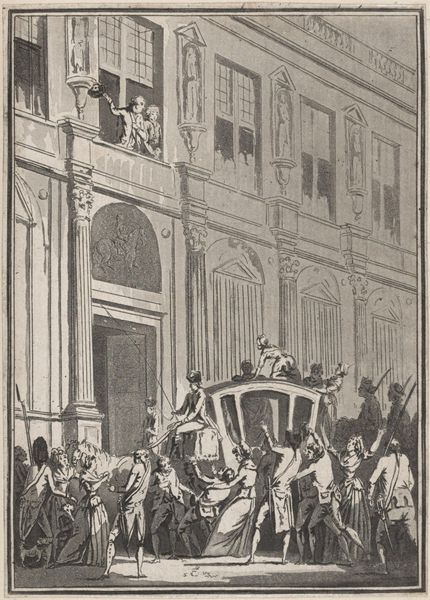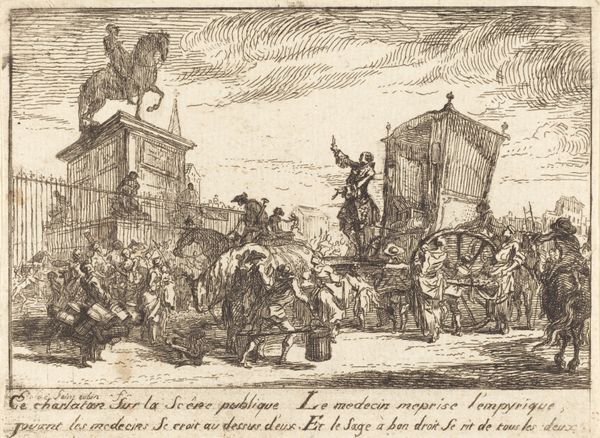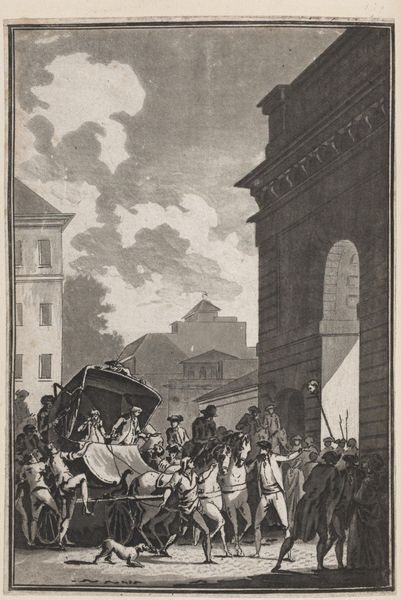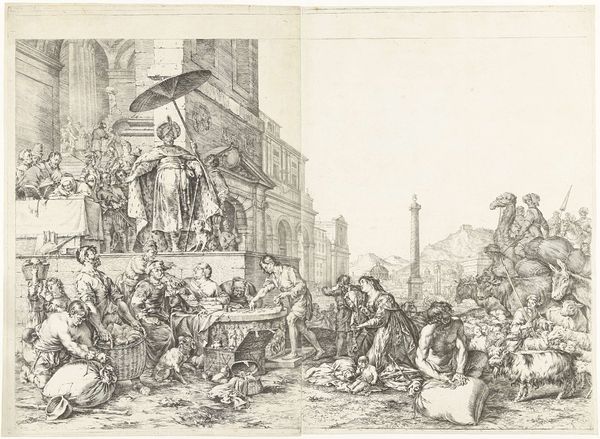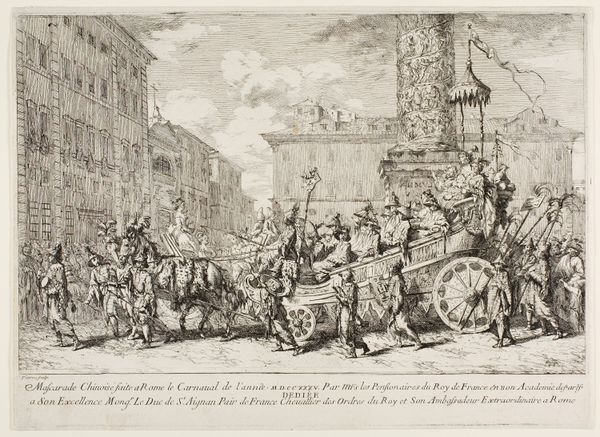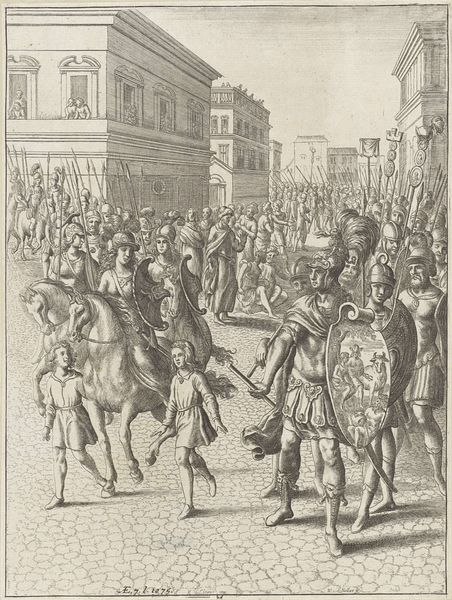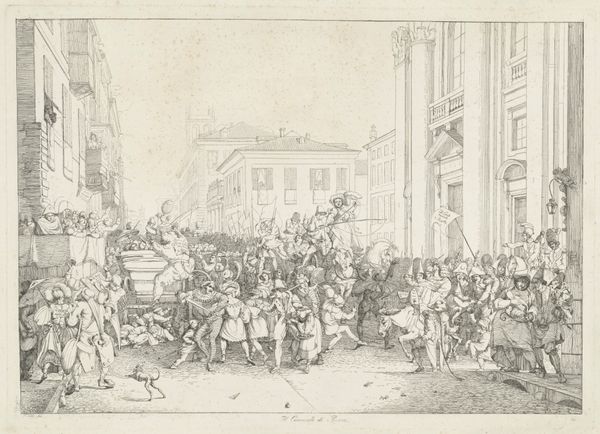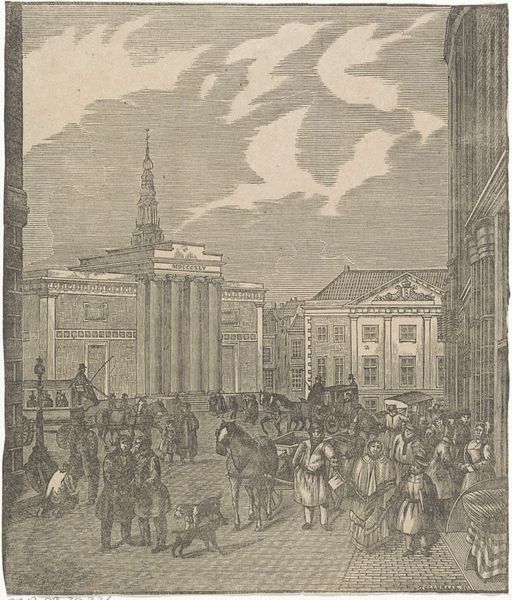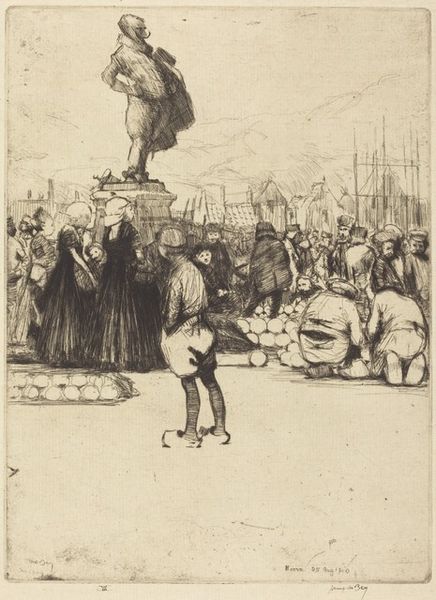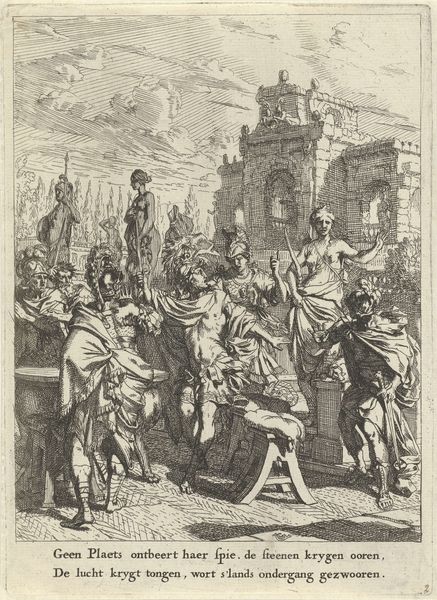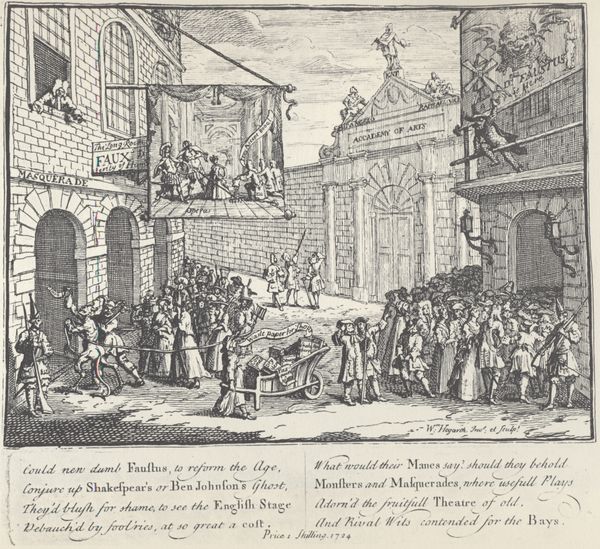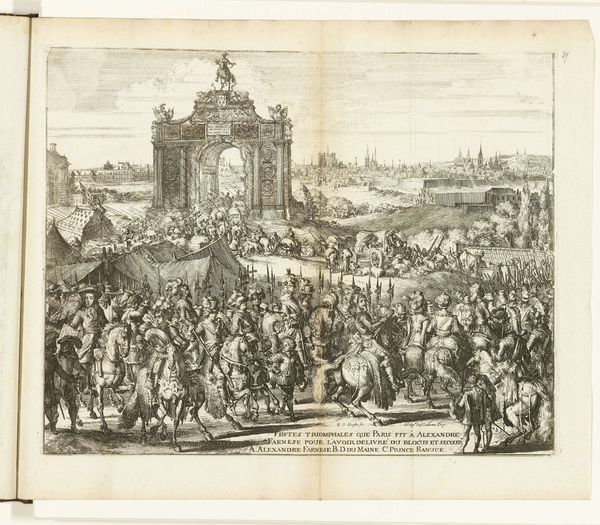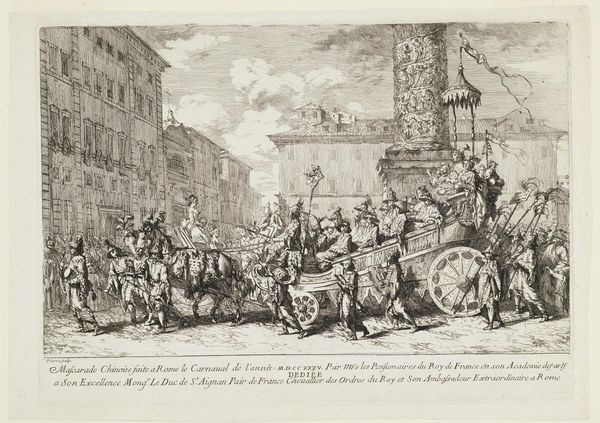
print, etching
#
baroque
# print
#
etching
#
figuration
#
cityscape
#
history-painting
Dimensions: height 193 mm, width 137 mm
Copyright: Rijks Museum: Open Domain
Curator: Welcome! Today, we are observing "Equestrian statue of the emperor of the Holy Roman Empire," an etching made in 1637 by Claude Lorrain, part of the Rijksmuseum collection. Editor: There's a certain formality but also a starkness. The line work is incredibly detailed yet the overall feel is… almost unfinished, or perhaps deliberately raw. Curator: Baroque printmaking frequently balanced opulence with accessibility, and Lorrain here presents a layered political message. Notice how the monument is not centered, seemingly a backdrop to the firing range and the executions, making the central act of power somewhat performative. Editor: Absolutely. Looking closer at the process, the visible lines, the density and the cross-hatching suggest the quick and precise work involved in this particular form of reproduction. Each etched line required physical labor to produce a matrix to disseminate. It speaks volumes about how easily and broadly imperial power can be broadcasted, yet is always supported by a very direct form of violence, as the material support, in this image at least. Curator: Indeed, consider also the audience intended for such a print. Were they meant to be symbols of imperial grandeur disseminated among the masses, or records consumed by a learned elite? The image serves both. Also, the way Lorrain composes it suggests, not so subtly, the costs on which the Empire is built. Editor: You can practically smell the gunpowder! But thinking about it as an object, not merely an image, the widespread nature of prints also hints at the democratizing possibilities inherent within even propagandistic forms. Think of the paper, ink, the work that the executioners also put in it… so much physicality supporting just a simple idea, just a message to remember. Curator: Very well put. The print, through its distribution, enters the public sphere, becoming an object of debate. The monument itself becomes subservient to the narrative told on the sheet, almost incidental. Editor: Which is interesting since usually you have public monuments trying to tell you their narrative to the population... Fascinating piece! Curator: Agreed. A testament to the complex interplay between art, power, and the means of production in the Baroque era. Editor: Thanks for guiding us. It gives a lot of food for thought as to what happens between labor, representation and reception.
Comments
No comments
Be the first to comment and join the conversation on the ultimate creative platform.
